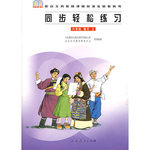题目内容
阅读理解
An allowance is an important tool for teaching kids how to budget, save and make their own decisions. Children remember and learn from mistakes when their own dollars are lost or spent foolishly.
How large an allowance is appropriate? Experts say there is not fight amount. Actual amounts differ from region to region, and from family to family.
To set an appropriate allowance for your child, work up a weekly budget. Allow for entertainment expenditures such as movies and snacks. Next, include everyday expenses such as lunch money, bus fare, school supplies. “If you make the child responsible for these bills' ,” says Josephine Swanson, a consumer specialist, “he or she will learn to budget for necessary expenditures.”
Finally, add some extra money to make saving possible. If you can, keep your child's allowance in line with that of his friends. A child whose purchasing power falls away below his peers' can feel left out.
It can be tough, but avoid excusing your children when they make a mistake with their allowance. When Brooke Stephens was ten and growing up in Jacksonville, her mother gave her $ 5 a week, $ 1.75 of which was for bus fare and lunch. “If you lose your money,” Brook's mother told her, “you walk home.”
One week the girl spent all her allowance in a candy store; then she called home for a fide. “Mom made me walk home, ” recalls Stephens, now a financial planner in Brooklyn. “At first I was angry. But I finally realized that she was trying to teach me an important lesson.”
Experts advise that an allowance should not be tied directly to a child's daily chores. Kids should help around the house not because they get paid for it but because they share responsibilities as members of a family. You might, however, pay a child for doing extra jobs at home, that can develop his or her initiative.
(1)What does the passage mainly discuss?
[ ]
A.How to develop a child's initiative.
B.How to work up an amount of pocket money.
C.How to teach a child to save money.
D.How to teach a child about money.
(2)It can be inferred from the passage that if a child is given an allowance, he or she may ________.
[ ]
A.spend all the money very soon
B.be spoiled and finally mined
C.feel responsible and care about money
D.lose the money and can not return home
(3)In Paragraph 4, the words “his peers” refer to ________.
[ ]
A.his parents
B.his teachers
C.his financial experts
D.his friends
(4)Why does the author mention Brooke Stephens?
[ ]
A.To question the opinion about pocket money.
B.To compare Stephens with other financial experts.
C.To explain that parents should be strict when children are developing good habits about money.
D.To suggest that pocket money is useless in developing a child' s sense of responsibility.
(5)The author implies in the passage that ________.
[ ]
A.paying children for their housework is no good
B.a child's initiative can be developed if he or she is paid for all the housework
C.children may feel lost and lonely if they have no pocket money
D.children may learn to put aside some money if they are given a great amount of pocket money
解析:
|
(1) D 文章第一句就点明了主题:零用钱是一项重要的工具,它可以帮助家长教孩子们如何编预算、储蓄及作出他们自己的决定.在接下来的几段中作者具体阐述了家长应该如何教孩子们花钱,故选D. (2) C 文章第一段大意为:零用钱可以帮助家长教孩子们如何编预算、储蓄及作出他们自己的决定,当孩子们自己的钱丢掉或不明智地花掉后他们将会吸取教训,故选C. (3) D 见文章第四段第二、三句,意为“如有可能,给你孩子的零用钱应与他朋友们的零用钱相当,如果一个孩子的购买力低于同龄人,他可能会感到自己被孤立起来”,可见,第三句中his peers与第二句中his friends是指同一对象,故选D. (4) C 文章第五、六段举子关于Brooks Stephens的一个例子:当Brooks Stephens十岁时,她母亲每周给她5美元的零用钱,其中1.75美元是午餐费和车费,有一次Brooke Stephens在一个糖果店花光了所有的钱,她打电话让家人去接她.但她母亲却让她自己走回家.Brooks Stephens最终认识到母亲是教她吸取教训,这个例子说明了家长们在教孩子如何花钱时应严格要求,故选C. (5) A 见文章最后一段,意为:表示建议千万不要直接以孩子们做家务的报酬这一名义给孩子零用钱,孩子们做家务并不是因为他们会因此获得报酬,而是他们应承担作为家庭一员的责任.因此可以看出,作者不赞同孩子做家务获得报酬的这一做法,故选A. |

 同步轻松练习系列答案
同步轻松练习系列答案 课课通课程标准思维方法与能力训练系列答案
课课通课程标准思维方法与能力训练系列答案